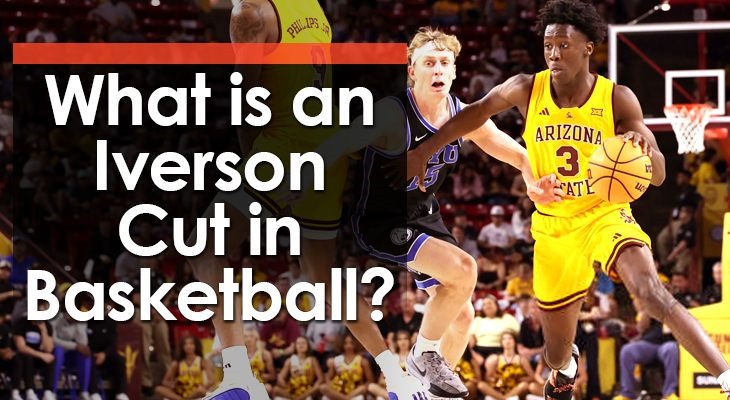


Most basketball coaches love their stats, as they typically give them a pretty good idea of how their team played.
Some coaches focus on their shooting percentage. Others on the rebounding battle.
But no matter what column a coach may look at first, it is guaranteed that eventually they take a look at the number of turnovers their team committed.
Because while most statistics can be skewed at least a little bit depending on the opponent, turnovers are a pretty clear indication of how a team played.
This article will look at what turnovers in basketball are, why teams attempt to limit them each game, and what you can work on with your players to avoid them as much as possible.
What Is a Turnover in Basketball?
A turnover is when the offense loses possession of the basketball before attempting a shot.
How do Turnovers Occur?
There are basically two different ways that a player can commit a turnover:
1. Violation
A violation occurs whenever an offensive player breaks a rule and the referee stops play to give the basketball to the other team.
Common violations include: traveling, double dribble, carrying, out of bounds, 3 second violation, 5 second violation, 10 second violation, backcourt violation, shot clock violation, illegal screen, or charging.
2. Player errors
The other way turnovers occur is when players simply make some sort of mistake and the ball is turned over to the other team.
These errors usually occur either when dribbling or passing the basketball.
Players may dribble poorly and get the ball stolen, throw a bad pass that the other team takes, or any other fumble or drop that results in the defense getting the ball.


What Is the Penalty for a Turnover?
The penalty for a turnover is the loss of possession of the basketball and the other team taking over on offense.
How the defense takes over possession of the ball depends on what type of turnover it is.
1. Dead ball turnover
Dead ball turnovers occur after a violation.
This means that the defense must take the ball out of bounds on the sideline or baseline nearest where the violation occurred and throw it in to begin their possession.
2. Live ball turnover
A live ball turnover occurs after a dribbling or passing player error.
On these turnovers, the defense gains immediate possession of the basketball and gets to transition to offense right away and try to score.


Teaching Players to Avoid Turnovers
One thing all basketball coaches can agree on is they hate when their teams turn the ball over.
So here are a few things you can work on with your team to help them avoid committing lots of costly turnovers:
1. Focus on dribbling
No matter what age you coach, you can never spend too much time on dribbling drills.
Focus on weak hand development so defenders can’t just sit on a player’s dominant hand.
Being able to drive either direction will automatically cut down dribbling turnovers immensely.
Also, make sure to practice dribbling against a defender and not just do stationary dribbling drills.
Yes, it is important for players to master the basic dribbling skills early on by working by themselves without moving, but in order for those skills to translate to a game, they must be done against an actual defender so their weaknesses can be exposed.
1-on-1 drills are a great way to effectively work on a player’s ball-handling.
2. Live passing drills
Much like dribbling, it is imperative that your players hone their passing skills against a live defense as much as possible.
Yes, you can start with basic partner passing to introduce the different types of passes.
But once they have those done, make sure to use passing drills that involve real defenders.
Not only will your players begin to learn what works and what doesn’t when it comes to passing, but they will inherently learn the importance of a pass fake, which is hard to get across without a defense.
3. Overloaded drills
A fantastic way to work on taking care of the ball is by having your offense try to score against a defense that has more players than the offense.
This forces the offense to work on moving to get open, making crisp and accurate passes to teammates, and using their dribble to escape any trouble or improve passing angles.
The added defender means that there will always be defensive pressure on the ball and shouldn’t be any uncontested passes for the offense to complete.
Creating a practice situation that is more difficult than any game situation your players will face should help them be more confident during a game and also to stay composed when a team plays tough pressure defense.


Conclusion
There is really nothing worse for an offensive team than a turnover.
Whether it occurs from a violation or a player’s mistake, your team not getting a chance to score because of a turnover is a certain recipe for disaster.
While you may never be able to eliminate them completely, there are definitely things you can do to help your team commit fewer turnovers.
Developing your group into the most skilled team possible through live dribbling and passing drills will help their ability to take care of the ball and keep those turnover numbers low.






